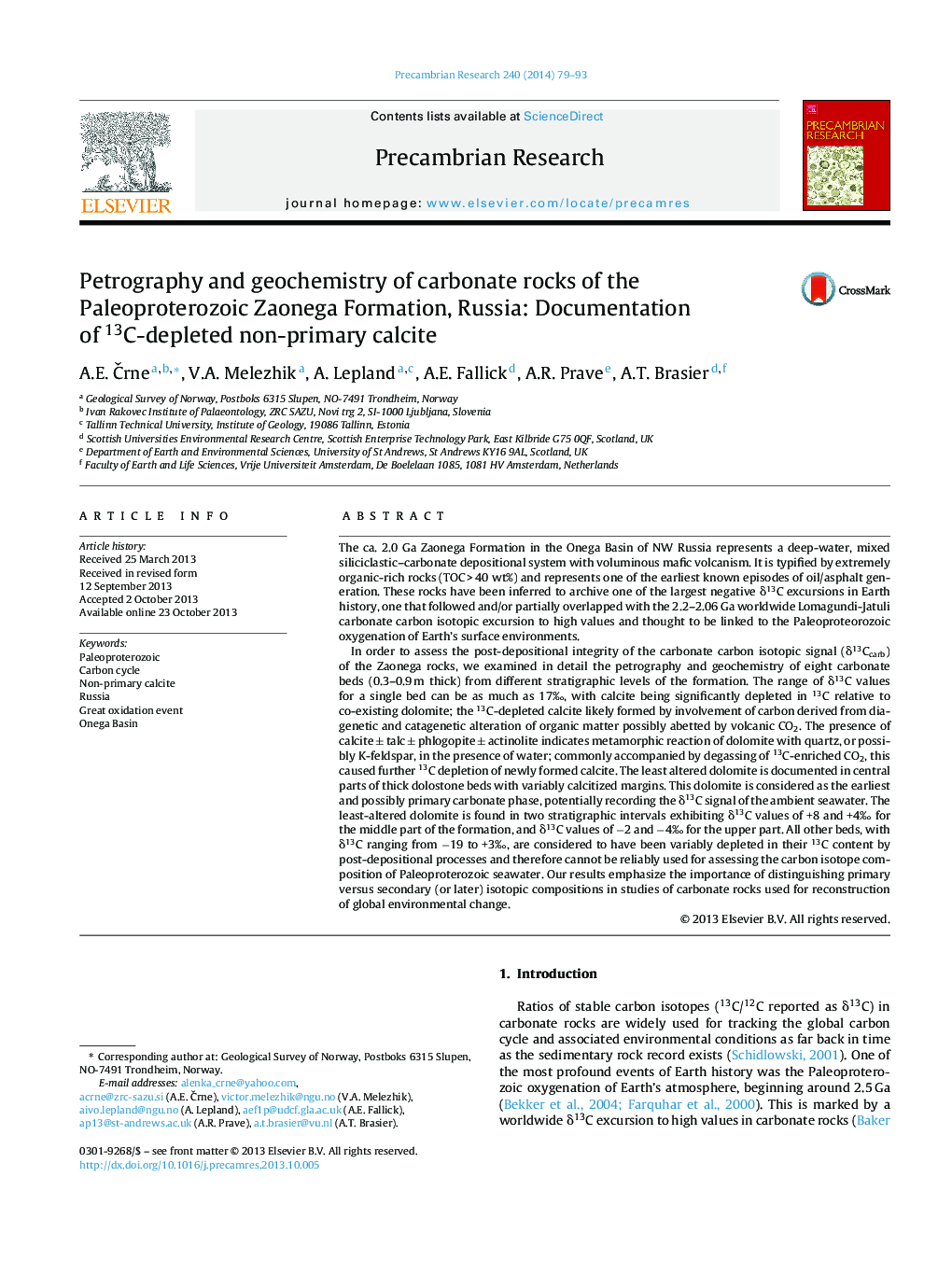| کد مقاله | کد نشریه | سال انتشار | مقاله انگلیسی | نسخه تمام متن |
|---|---|---|---|---|
| 4723028 | 1639634 | 2014 | 15 صفحه PDF | دانلود رایگان |

• δ13Ccarb depletion of up to 17‰ is the result of post-depositional alteration.
• Extensive fluid circulation caused secondary calcitization of carbonate beds.
• Among least altered samples none have extremely low (less than −5‰) δ13Ccarb values.
• Scarcity of least-altered Zaonega carbonates highlights the need for additional study.
The ca. 2.0 Ga Zaonega Formation in the Onega Basin of NW Russia represents a deep-water, mixed siliciclastic–carbonate depositional system with voluminous mafic volcanism. It is typified by extremely organic-rich rocks (TOC > 40 wt%) and represents one of the earliest known episodes of oil/asphalt generation. These rocks have been inferred to archive one of the largest negative δ13C excursions in Earth history, one that followed and/or partially overlapped with the 2.2–2.06 Ga worldwide Lomagundi-Jatuli carbonate carbon isotopic excursion to high values and thought to be linked to the Paleoproteorozoic oxygenation of Earth's surface environments.In order to assess the post-depositional integrity of the carbonate carbon isotopic signal (δ13Ccarb) of the Zaonega rocks, we examined in detail the petrography and geochemistry of eight carbonate beds (0.3–0.9 m thick) from different stratigraphic levels of the formation. The range of δ13C values for a single bed can be as much as 17‰, with calcite being significantly depleted in 13C relative to co-existing dolomite; the 13C-depleted calcite likely formed by involvement of carbon derived from diagenetic and catagenetic alteration of organic matter possibly abetted by volcanic CO2. The presence of calcite ± talc ± phlogopite ± actinolite indicates metamorphic reaction of dolomite with quartz, or possibly K-feldspar, in the presence of water; commonly accompanied by degassing of 13C-enriched CO2, this caused further 13C depletion of newly formed calcite. The least altered dolomite is documented in central parts of thick dolostone beds with variably calcitized margins. This dolomite is considered as the earliest and possibly primary carbonate phase, potentially recording the δ13C signal of the ambient seawater. The least-altered dolomite is found in two stratigraphic intervals exhibiting δ13C values of +8 and +4‰ for the middle part of the formation, and δ13C values of −2 and −4‰ for the upper part. All other beds, with δ13C ranging from −19 to +3‰, are considered to have been variably depleted in their 13C content by post-depositional processes and therefore cannot be reliably used for assessing the carbon isotope composition of Paleoproterozoic seawater. Our results emphasize the importance of distinguishing primary versus secondary (or later) isotopic compositions in studies of carbonate rocks used for reconstruction of global environmental change.
Journal: Precambrian Research - Volume 240, January 2014, Pages 79–93